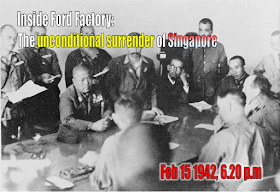We do not live in a perfect world. 'Regardless of race, language or religion' is an aspiration to work towards, not something that we have already arrived at.
Do you really see yourself simply and only as a Singaporean and no longer regard yourself as Chinese, Malay or Indian?
...

If you're Chinese, you still celebrate Chinese new year and festivals, don't you? You still give your children Chinese names, don't you? Have you ditched your Chinese culture or stop speaking Chinese? Likewise if you're Malay or Indian and so on.
We are multiracial and will always be multiracial and not a homogenous society. We achieve racial harmony not by denying the culture and traditions of each ethnic group or our own.
We achieve it by accepting that each group brings with them their unique culture and traditions that can enrich the Singapore identity and we build on the common space that we also share.
The President as the head of state is to reflect the multiracial composition of Singapore. It has nothing to do with playing the race card.
Look at the world around you. Is racism on the rise? What makes you think that Singaporeans are a special breed of race-blind people? If the elected president is somehow always a Chinese, who is to say that the day will never come when someone with a agenda will whisper: Are we not a multiracial country? Why is the president always a Chinese?
We have achieved racial harmony because we have an ACTIVIST GOVERNMENT who intervenes with social policies to prevent enclaves from being formed thus leading to greater integration.
We enjoy racial harmony because there are very TOUGH LAWS in place to deal with hate speech, racial slurs and religious insults.
Take away the activism of the government. Take away the tough laws. Will we still enjoy the same kind of peace and racial harmony?
It is important to understand that the peace and the harmony we enjoy among the different races is not automatically passed down to future generations. It is not something in your genes that you can passed on to your children. Every child has to learn from the day he or she is born, to accept racial differences and to co-exist with different races.
This means that how you feel today about the different races and what you enjoy today is not a given for future generations. That is why the government keeps emphasizing the need for sustained efforts to maintain racial harmony.
Some argue that a reserved election compromises on meritocracy. How is meritocracy compromised when the candidate is still subject to the same qualifying criteria?
In a hypothetical scenario where a Chinese and a Malay candidate stand for election competing against each other. Let's say that the Malay candidate is a better candidate of the two but the Chinese candidate wins. Where then is your meritocracy argument?
The baseline is that any person who wants to stand for election as president must meet the qualifying criteria. These are the same regardless of whether an election is reserved or not.
A point to note is that the reserved election APPLIES TO ALL RACES INCLUDING THE CHINESE.
We don't talk about a reserved election for a Chinese candidate because such a scenario is unlikely to arise. But in principle, the reserved election applies to all races.
In the unlikely event that no Chinese gets elected as President for 5 elections, then there will be a reserved election for a Chinese candidate.


















